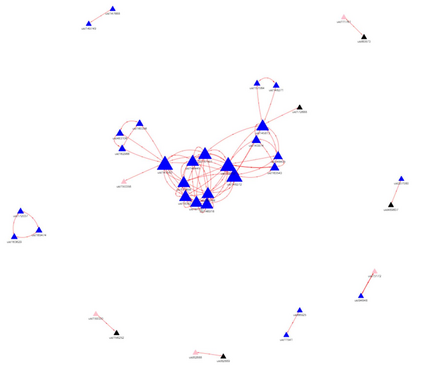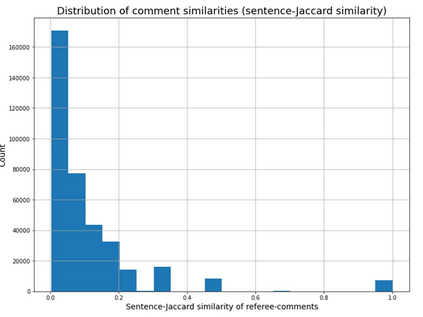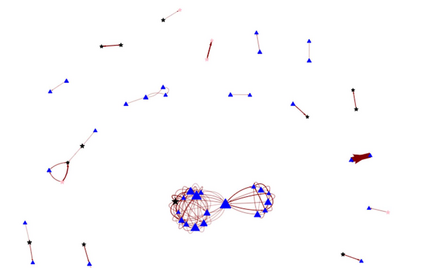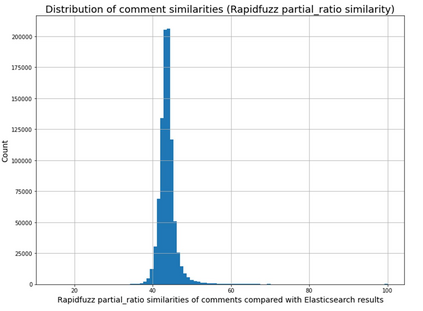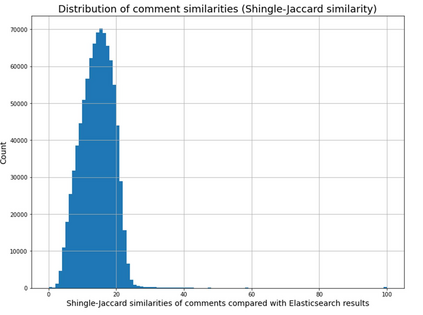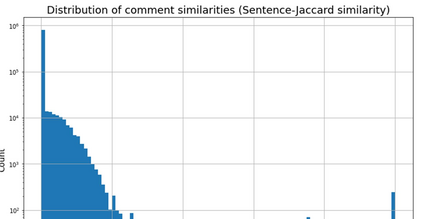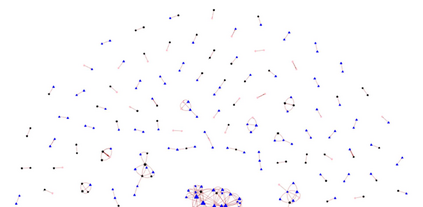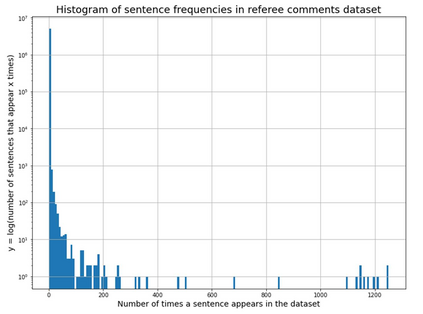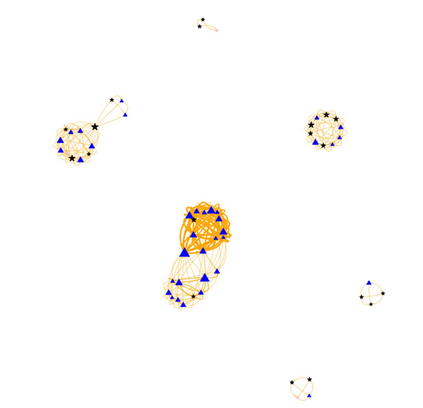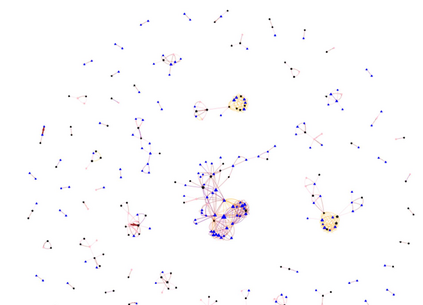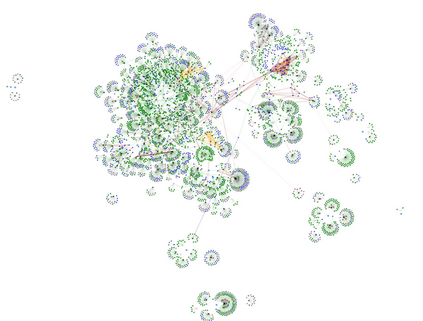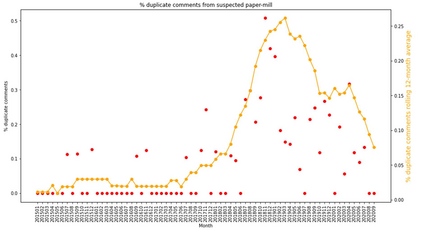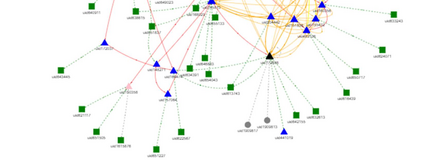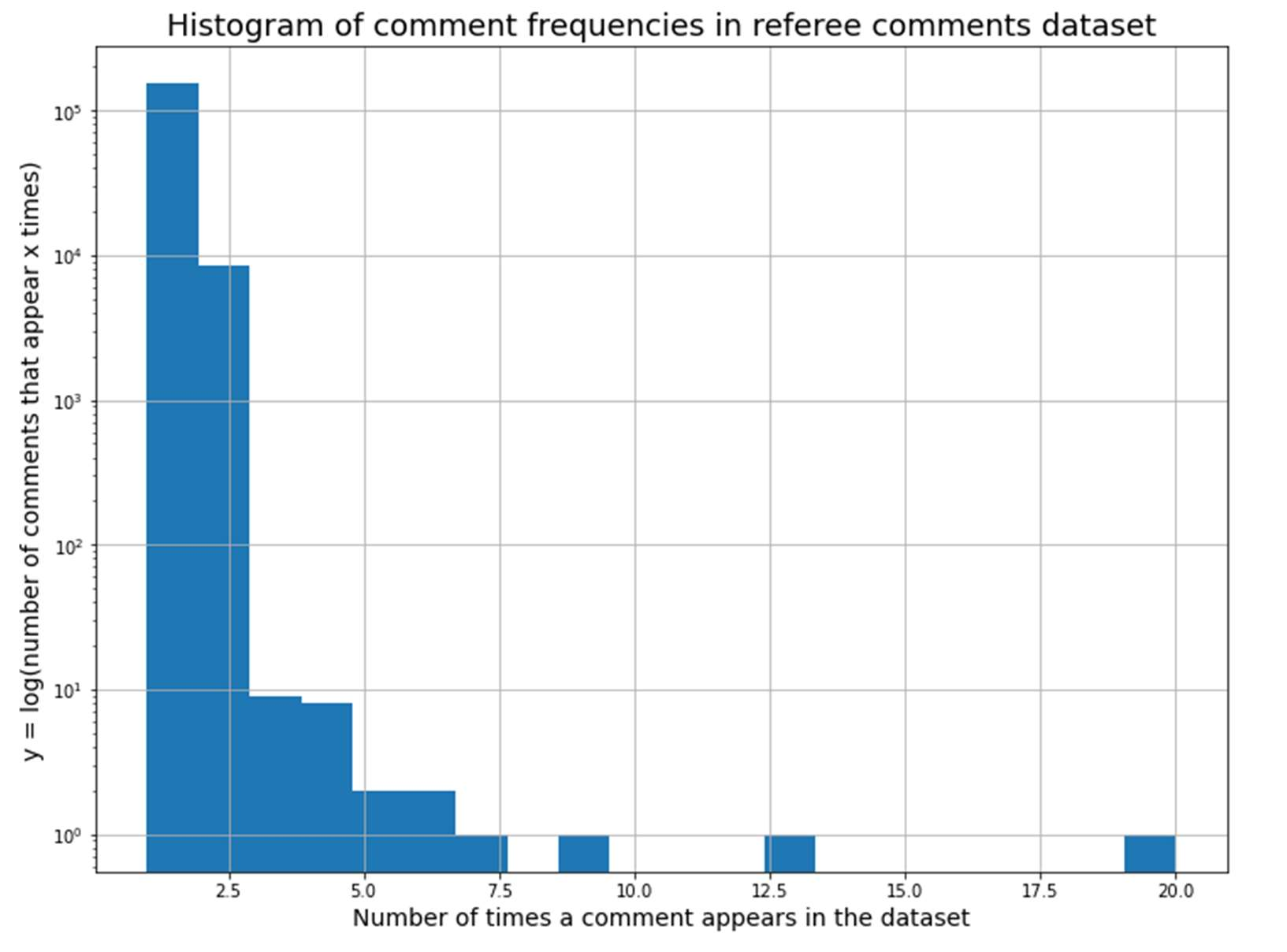Comments received from referees during peer-review were analysed to determine the rates of duplication and partial duplication. It is very unusual for 2 different referees to submit identical comments, so the rare cases where this happens are of interest. In some cases, it appears that paper-mills create fake referee accounts and use them to submit fake peer-review reports. These include comments that are copied and pasted across multiple reviews. Searching for duplication in referee comments is therefore an effective method to search for misconduct generally, since the forms of misconduct committed by paper-mills go beyond peer-review fraud. These search methods allow the automatic detection of misconduct candidates which may then be investigated carefully to confirm if misconduct has indeed taken place. There are innocent reasons why referees might share template reports, so these methods are not intended to automatically diagnose misconduct.
翻译:对同行审议期间从被审查人收到的意见进行分析,以确定重复和部分重复的比率,对于两个不同的被审查人来说,提交相同的意见是非常罕见的,因此,这种情况很少发生的情况是值得注意的;在某些情况下,纸浆机似乎制造假的裁判人账户,并利用这些账户提交假的同侪审查报告,其中包括复制和张贴在多个审查中的评论;因此,在被审查人意见中寻找重复之处是一般地寻找不当行为的有效方法,因为纸浆机的不当行为形式超越了同行审议欺诈。这些搜索方法使得可以自动发现不当行为候选人,然后可以仔细调查,以确认是否确实发生了不当行为。 被审查人可以分享模板报告的理由是无辜的,因此,这些方法并不是为了自动诊断不当行为。


